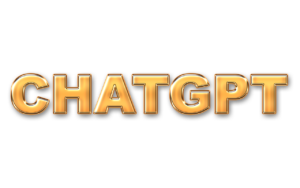
How ChatGPT Is Revolutionizing Education, Not Replacing It
In educational institutions, the adoption of artificial intelligence in general, and ChatGPT in particular, is growing rapidly. Far from undermining traditional teaching methodologies or even perhaps the elimination of educators, ChatGPT could hold the key to making learning more accessible, personalized, and engaging. Some critics issue dire warnings about how AI will disrupt the entire enterprise. Yet, a closer look reveals how ChatGPT is more likely to transform education for the better than destroy it.
CHATGPT platforms make a leap into a new frontier in personalized learning during the COVID-19 pandemic. Students usually learn at their own speeds and with different approaches, which makes it virtually impossible for any teacher to fulfill every different need. Students with CHATGPT will be receiving personalized feedback and responses instantaneously, thus allowing themselves to go through topics that are difficult to understand or do all the rushing of materials that they have already gone over.
For instance, a student who doesn’t understand algebra that well may have ChatGPT explain it in simpler terms and then walk him or her through the problems step by step. It can also make the information more varied, be it text explanations, examples, or mini-quizzes. Normally, such customization is hard to achieve in a traditional classroom setting due to resource and time constraints.
Increasing Access to Education
Another very important role of integrating ChatGPT into education is the potential to widen the area of access. Students from underfinanced or remote areas of the world have limited access to high-quality teachers and modern educational materials. On the other hand, ChatGPT is always accessible and can become an additional tutor for students by providing answers to their questions and resources that otherwise wouldn’t be accessible to them.
Further, in cases of students with disabilities or learning difficulties, ChatGPT can facilitate individualized learning pathways and provide assistive technologies to make learning all-inclusive. Be it text-to-speech conversion, summarization in simpler tones, or using visuals for aid, the innovations within ChatGPT can be used in differing learning needs so that no child gets left behind.
Reducing Teacher Workload
It can, indeed, unburden teachers from some administrative tasks and allow educators to devote more time to teaching and interacting with students. More often than not, a teacher wastes too much time grading assignments, making lesson plans, and answering repeated questions. ChatGPT will make that easier by giving instantaneous feedback on quizzes, making outlines for lessons, and answering frequently asked questions by students.

For example, ChatGPT can assist teachers in grading multiple-choice tests, giving general responses on student essays, or offering further readings. In this way, AI frees the educator from routine activities and enables them to invest more time in creative teaching strategies and bonding with students.
Encouraging Critical Thinking
Another fallacy about ChatGPT is that it makes students over-rely on technology to the point of quelling their critical thinking ability. On the contrary, AI, if used properly, actually encourages critical thinking and problem-solving skills. Instead of providing just the answers, for example, ChatGPT can afford questions on the part of students where they are made to think through various situations and explore alternative ways of solving problems.
In literature or history, for instance, ChatGPT can act as a discussion partner with students through debates or have them consider viewpoints that question their assumptions. For math and science, it can walk them through processes of problem-solving without giving an answer. This mode of interaction fosters deeper learning and critical engagement of the material.
Addressing Ethical Concerns
Of course, this raises valid ethical concerns with regard to the use of AI in education. It goes without saying that issues such as data privacy, biases in AI algorithms themselves, and over-reliance on technology have to be dealt with in order for ChatGPT to serve as an enhancer, rather than a detractor, in the process of learning. Educational institutions should take the initiative to put in place guidelines and rules that stipulate how AI-powered tools such as ChatGPT may be used in classrooms.
More importantly, teachers and students should be trained in the responsible use of AI, knowing when not to rely on it yet being open to its promise. ChatGPT is a tool to assist learning, not replace the tried and true methods of teaching.
Conclusion
Such a strong tool is ChatGPT that it brings a change for good in education. Rather than fearing AI will replace teachers or lower standards of education, we should embrace ways AI can support personalized learning, increase access to knowledge, and lighten teacher workloads. By helping foster critical thinking and adapting to the needs of individual students, ChatGPT has the potential to make education more inclusive, efficient, and engaging.
[…] outline your audience, campaign dreams, and the kind of messaging you choose. It may even generate email templates complete with an creation, product highlights, CTAs, or even last […]